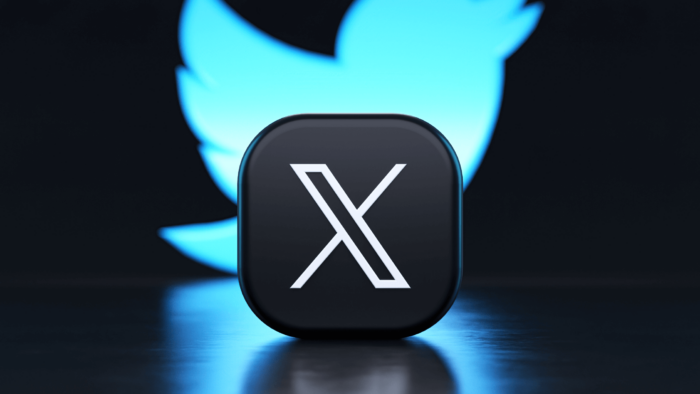Diving into X ads (formerly known as Twitter ads) can feel overwhelming.
But…
It’s a game-changer for reaching your audience where they’re most engaged.
And, when you’re starting, knowing what NOT to do is just as vital as what to do.
From ad copy that connects to timing your tweets for maximum impact, steering clear of common pitfalls is your pathway to success.
Ready to make your mark on Twitter without the guesswork?
Let’s dive right in.
1. Misusing or Overusing Hashtags

They aren’t what they used to be, but…
When used properly, hashtags can still be an effective element of a good X/Twitter ad.
But when you misuse or pile them on, you’re not whispering in the ear of your consumer; you’re shouting into a void.
An ad crammed with hashtags feels more like a desperate plea for attention rather than a confident, targeted statement.
This not only confuses your audience but also scatters your ad’s focus, diluting its impact and potentially diminishing your brand’s voice.
What To Do Instead
Embrace the power of selectivity with your hashtags. Immerse yourself in a bit of research to discover which hashtags buzz louder within your niche.
This isn’t about casting a wide net; it’s about casting the right one.
So, choose 1-3 contenders that truly speak to the heart of your campaign…
And then choose one. Just one.
2. Overcomplicating Ad Copy
Simplicity is your friend.
Crafting ad copy that’s too dense or complex is a common misstep that can clutter your message. Twitter is a platform of brevity and clarity, and users scroll fast; they’re not looking to unravel a mystery.
Overcomplicated ad copy demands too much time from your audience, a commodity that’s in famously short supply on social media.
When the message isn’t immediately clear, potential customers move on, and you miss the chance to make that crucial connection.
What To Do Instead
Strive for simplicity and precision in your ad copy. Your goal is to convey your message as swiftly and as sharply as possible.
Think of your ad as a billboard — every word counts and clarity is king.
Use straightforward language that gets to the point without unnecessary fluff.
3. Not Monitoring Competitors
Competitors can provide a treasure trove of insights into what works and what doesn’t in your industry’s social media landscape.
By not monitoring them, you risk missing out on successful strategies or, worse, repeating their past mistakes. Remember, your competitors are vying for the same audience’s attention, and there’s much to be learned from their triumphs and slip-ups.
What To Do Instead
Keep a watchful eye on your competitors’ Twitter ad campaigns.
You don’t need to mimic them, but you should analyze their approach to engagement, hashtag use, and the type of content they promote.
4. Not Monitoring Ad Comments

Launching a Twitter ad into the world without following up on the conversation it generates is a missed opportunity.
Ad comments can be a goldmine of feedback and engagement, and overlooking them might give the impression that your brand is unresponsive or disinterested.
This negligence can stunt the growth of community and customer loyalty, and in some cases, can allow negative sentiments to fester unaddressed, potentially harming your brand’s reputation.
What To Do Instead
Dive into the comments section of your Twitter ads regularly.
It’s a space buzzing with real-time feedback that can guide you to tweak your campaign for better performance.
Engage with your audience, thank them for positive comments, address concerns, and answer questions.
5. Ignoring Mobile Optimization

If your Twitter ads aren’t optimized for mobile users, you’re essentially turning a blind eye to the majority.
Mobile users crave quick-loading, easy-to-read content that fits perfectly on their handheld screens. Ignoring mobile optimization means your ads could look unattractive, load slowly, or even display incorrectly on mobile devices, causing frustration and a quick scroll past your ad.
What To Do Instead
When you craft your Twitter ads, think mobile-first.
Ensure that your visuals are captivating and clear, even on the smallest screen, and that your ad copy is concise enough to be digestible at a glance.
Test loading times and display across different devices to ensure a seamless experience.
6. Setting an Inappropriate Budget
The budget for your Twitter ads shouldn’t be a number plucked from thin air.
An inappropriate budget can mean you either burn through your funds with little return or you invest too little, causing your campaign to whimper into obscurity without making any real impact.
Without a budget that aligns with your campaign goals and audience size, you’re shooting in the dark, hoping to hit the target.
What To Do Instead
Calculate your ad budget with purpose and precision.
Start with clear objectives: Are you aiming for brand awareness, lead generation or sales conversions?
From there, understand your audience’s size and the typical engagement rates within your industry. Use Twitter’s own tools to forecast reach and frequency based on your budget.
7. Neglecting Ad Scheduling
Posting ads without considering the time of day or day of the week can lead to suboptimal engagement, as your target audience may not be online to see your message.
This neglect can result in your ad spend being wasted on impressions that don’t convert into engagement or leads.
What To Do Instead
To ensure your Twitter ads receive the standing ovation they deserve, schedule them strategically. Delve into analytics to understand when your target audience is most active on Twitter.
Are there specific hours or days when they engage more? Utilize Twitter’s scheduling features to deploy your ads during these peak times.
By aligning your ad schedule with your audience’s Twitter habits, your campaign is more likely to catch the right eyes and achieve its desired effect.
8. Not Testing Ad Variations
Launching a single version of a Twitter ad and expecting it to perform flawlessly from the get-go is a strategy that can fall flat.
Without testing different variations, you’re not exploring the full potential of what could resonate with your audience.
It’s a static approach in a dynamic marketplace where preferences and behaviors are constantly evolving. Not testing means not learning, and that’s a missed opportunity to refine your ads for better performance.
What To Do Instead
Get creative and curious by deploying a variety of ad iterations.
Mix up your headlines, images, and calls-to-action to see which combination sparks the most engagement.
9. Not Utilizing Conversion Tracking
When you don’t utilize conversion tracking for your Twitter ads, you miss the ability to see how users interact with your ads beyond clicks and impressions.
This oversight can lead you to make uninformed decisions, as you’re not privy to the actions users take after interacting with your ad, whether they make a purchase, sign up for a newsletter, or download your app.
What To Do Instead
Implement Twitter’s conversion tracking tools to gain clear insights into how effective your ads are in driving actionable results. This allows you to see the full journey of your audience from ad interaction to conversion.
By understanding which ads lead to conversions, you can allocate your budget more effectively, double down on strategies that work, and discontinue those that don’t.
It’s a powerful way to ensure your Twitter ads are not just seen but are also compelling enough to inspire action.
10. Ignoring Analytics
Overlooking the analytics of your Twitter ad campaigns is like trying to hit a bullseye with a blindfold on…
You have no idea whether you’re even facing the right direction.
Analytics provide vital feedback on your ad’s performance, including engagement rates, reach, and the behavior of your audience.
By not diving into these metrics, you miss out on the opportunity to optimize your campaigns and improve ROI.
What To Do Instead
Make a habit of diving deep into your Twitter analytics regularly.
Look beyond surface-level metrics like impressions and delve into engagement rates, click-through rates, and conversion data. Identify trends and patterns that can inform future ad campaigns.
This is how you iterate and improve — by using real performance data to make informed decisions that will refine your ad strategy and ensure that your content resonates with your audience.
11. Neglecting Ad Creatives
Failing to put enough thought and creativity into your ad design can cause your campaign to blend into the background noise of Twitter.
The visuals and creative elements of your ad are what catch the eye and can make the difference between a scroll-past and a meaningful interaction. If your creatives are lackluster or generic, they won’t spark curiosity or stand out, which means they won’t get clicked.
What To Do Instead
Invest in high-quality, attention-grabbing creatives for your Twitter ads.
Whether it’s compelling imagery, captivating video content, or eye-catching graphics, your visual elements should be as engaging and as unique as your message.
12. Neglecting Keyword Research
Keywords are the signposts that guide users to your content, reflecting the current trends and conversations they are engaged in.
If your ads don’t speak the language of your audience — using the words and phrases they use and search for — your message may not reach its intended recipients, or worse, it may reach them but not resonate.
What To Do Instead
Dive into keyword research to understand the vernacular of your target audience.
Use tools designed for keyword discovery to find out which terms are associated with high engagement and conversion in your niche. Incorporate these keywords naturally into your ad copy, hashtags, and even into the naming of your images and videos.
13. Not Setting Clear Goals

Clear goals are the rudder that guides your campaign strategy, allowing you to measure success and make informed decisions.
Without them, it’s challenging to determine if your ads are effective, and you risk wasting time and resources on tactics that don’t support your business objectives.
What To Do Instead
Before you spend a penny, articulate what success looks like for your Twitter ad campaign.
Is it more followers, website traffic, lead generation or direct sales?
Once you define your objectives, every element of your campaign, from the ad copy to the call-to-action, should be crafted to support those goals.
14. Ignoring Audience Targeting

You may have a great message, but if it’s not reaching the right people, it’s unlikely to generate the results you want.
Ignoring the powerful targeting capabilities of Twitter means you could be missing out on engaging with a receptive and relevant audience, resulting in lower conversion rates and a higher cost per acquisition.
What To Do Instead
Leverage Twitter’s robust targeting options to get your ads in front of the right eyes. Start with demographic data, but don’t stop there.
Dive into interests, behaviors, and even lookalike audiences to find new customers who resemble your best existing ones. Tailor your messages to the specifics of these segments to increase relevance and resonance.
15. Failing to Test Different Ad Formats
Twitter offers a variety of ad formats, each with its own set of benefits and best use cases.
By not experimenting with different formats, you may not be utilizing the full potential of the platform to captivate your audience.
What To Do Instead
Expand your horizons by experimenting with the range of ad formats Twitter has on offer.
Try out image ads, video ads, carousel ads, and even moment ads to see which one best suits your message and resonates with your audience. Each format can play a different role in your marketing strategy, from quick engagement with image ads to deeper storytelling with video.
16. Neglecting Retargeting
Not using retargeting in your Twitter ads campaign is a missed opportunity for deepening relationships with users who have already shown interest in your brand.
These individuals have engaged with your content, visited your website, or used your app, and they’re more likely to convert into customers than someone encountering your brand for the first time.
What To Do Instead
Make retargeting a cornerstone of your Twitter advertising strategy.
Set up Twitter pixels on your website or track interactions with previous ads to identify your warm audience. Create tailored ad campaigns that address the specific interests or behaviors that these potential customers have already demonstrated.
This targeted approach makes your ads more relevant and personal, increasing the likelihood of converting past visitors into loyal customers.
17. Poor Ad Landing Page Optimization
If your Twitter ad’s landing page isn’t optimized for user experience and conversion, you might be derailing your ad’s success before users even have a chance to engage with your offer.
A landing page that is slow to load, difficult to navigate, or doesn’t match the promise of the ad can increase bounce rates and reduce the effectiveness of your entire campaign.
What To Do Instead
Your landing page should be a seamless extension of your ad, reflecting the message and offer clearly and concisely.
Ensure it’s optimized for quick loading times, mobile responsiveness, and clarity in the call to action. It should provide a user-friendly experience that guides visitors through the process of learning about your offer to taking the desired action.
18. Neglecting Negative Keywords
Overlooking the role of negative keywords in your Twitter ads strategy can lead to wasteful spending and diluted campaign effectiveness.
Just like targeting the right keywords ensures that your ads reach a relevant audience, implementing negative keywords prevents your ads from appearing in irrelevant searches, which can drain your budget and attract unqualified traffic.
What To Do Instead
Incorporate negative keywords into your ad campaigns to refine your targeting further.
Identify irrelevant terms that are related to your keywords but do not convert or attract the wrong audience. Adding these as negative keywords helps to filter out unwanted impressions and clicks, ensuring that your budget is spent on reaching potential customers who are more likely to be interested in your offer.
19. Forgetting Call-to-Action (CTA)
Creating Twitter ads without a clear call-to-action (CTA) is a critical oversight.
A CTA is the guiding light for your audience, telling them exactly what step to take next. Without it, even the most engaged users may lose direction and leave without taking any action, reducing the effectiveness of your ads.
What To Do Instead
Ensure that every ad you create includes a compelling CTA that aligns with your campaign goals.
Whether it’s ‘Shop Now’, ‘Learn More’, ‘Sign Up’, or ‘Get Started’, your CTA should be clear, concise, and visible. Use action-oriented language that encourages users to take the next step and make it easy for them by minimizing the number of clicks needed to complete the desired action.
20. Underestimating Ad Frequency
Not paying attention to how often your audience sees your Twitter ads can be a costly misstep.
Too much frequency can annoy users and lead to ad fatigue, while too little can prevent your message from resonating or being recalled.
It’s crucial to find a balance that keeps your audience engaged without overwhelming them.
What To Do Instead
To strike the right balance, monitor your ad frequency closely and adjust based on audience response.
Use Twitter’s analytics tools to gauge how often your ads are shown to the same users and observe the performance metrics. If you see diminishing returns, it may be time to reduce frequency. Conversely, if you’re not gaining any traction, a slight increase could be necessary.
It’s all about finding the sweet spot where your ads maintain their impact without becoming a source of irritation.
21. Inconsistent Branding
Inconsistent branding across your Twitter ads can confuse your audience and dilute your brand identity.
If each ad feels like it comes from a different source, you risk weakening the connection you’re trying to build with your audience, making it harder for them to recognize and trust your brand.
What To Do Instead
Consistency is key in branding.
Make sure that all your Twitter ads convey a cohesive brand message, tone and aesthetic. Use your brand colors, logos, and voice consistently across all ads.
This doesn’t mean every ad has to look the same, but there should be a recognizable thread that ties them all together.
When your audience sees an ad, they should immediately associate it with your brand, reinforcing recognition and trust, which are crucial for long-term relationships and customer loyalty.
Elevating Your Twitter Ads Game
You’re now equipped with the know-how to navigate the Twitter ads landscape like a pro.
Keep these 21 tips in hand, and you’re set to craft campaigns that resonate and deliver.
But before you create that first (or next) campaign, share your thoughts with me…
What’s the biggest make you see with X/Twitter Ads? Any mistakes you’ve made yourself?
Let me know in a comment below!


























Leave a Comment